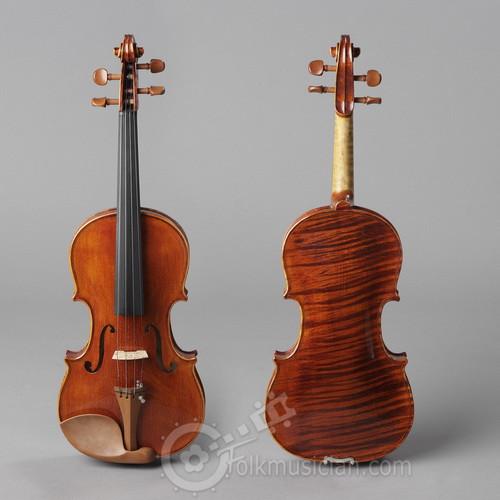Cello Tuning
This page will provide the basics of tuning a cello.Short version (for experienced musicians that just need to know the notes). A cello in tuned to: C G D A. (large to small string).
Longer version (for beginners).
First up, it is assumed that your cello has the bridge installed and is ready to play (aside from tuning).
If the bridge is not installed, your cello may not be setup correctly. This is more involved than tuning, and you may need to take the cello in to a shop.
Start by making sure the bridge is in the proper position and that the feet are level on the cello top.
If the strings are overly loose, tighten them a little so that the bridge is held steady. Before you begin tuning, look at the fine tuners (if installed) and adjust them so that they are in an in-between position.
Fine tuners are just that. They are meant for minor adjustments once the cello has been tuned with the tuning pegs.
Standard Cello tuning is: C G D A. (large to small string). You are going to need a reference pitch and a good ear. This could be a piano, pitch pipe, tuning fork, or other instrument that is properly tuned.
If you are not able to distinguish pitch and match the string to the reference, you only have 2 choices.
1. Have a more experience musician tune the cello for you.
2. Use an Electronic Tuner.
If you are using the second method, you need to get a tuner that is either dedicated to cello, or a chromatic tuner. The dedicated tuner is the best choice. Click here for Cello Tuners
Now you are prepared to do the actual tuning.
There is really not much to this part.
Slowly bring each string up to pitch.
If the Cello is very far out of tune, you may need to go through each string a few times.
Tune each string fairly close, and then start over...
As you tune the strings they will begin to pull the neck forward. This forward movement will release the tension on the other strings, essentially de-tuning them.
As you get the strings close to pitch, the neck will stabilize.
Remember to keep checking the bridge and straighten it as needed. The feet need to be flat on the cello top.
We will not discuss how to tune by ear. That is ear training and beyond the scope of this article.
As with any stringed instrument, be careful not to tune the strings too high. They break easily.
Trouble shooting:
Stringed instruments need constant attention to tuning. They can go out of tune in an hour or less, Humidity and temperature changes will affect tuning.
Most of the time this should be minor.
If your cello will not stay in tune at all, this is almost always improperly fitted tuning pegs. If your cello is more than a few years old, it may be time to take it to the local shop for some maintenance.
If your cello is new, your cello should have been setup by the seller. If you purchased from a seller that did not setup the instrument (common when purchasing from the lowest priced sellers), be prepared for price shock when you take your new instrument in to a local shop to have the work done.
The tuning pegs must fit perfectly or they will not grip well enough to stay in place. If the pegs slip loose, the cello needs to be taken to a shop for adjustment. Average cost to have the pegs worked on: $70 (rarely under $10 per peg), not including replacement pegs if needed (it can be more).
We hope this has been of some help.
Leave a comment
Comments will be approved before showing up.
Also in Fiddle-Violin

Where are Cremona Violins Made?
Cremona Violins are made in China. Cremona was one of the first major brands to be imported to the USA from Asia. They have become a favorite among teachers and students, due to their value.

